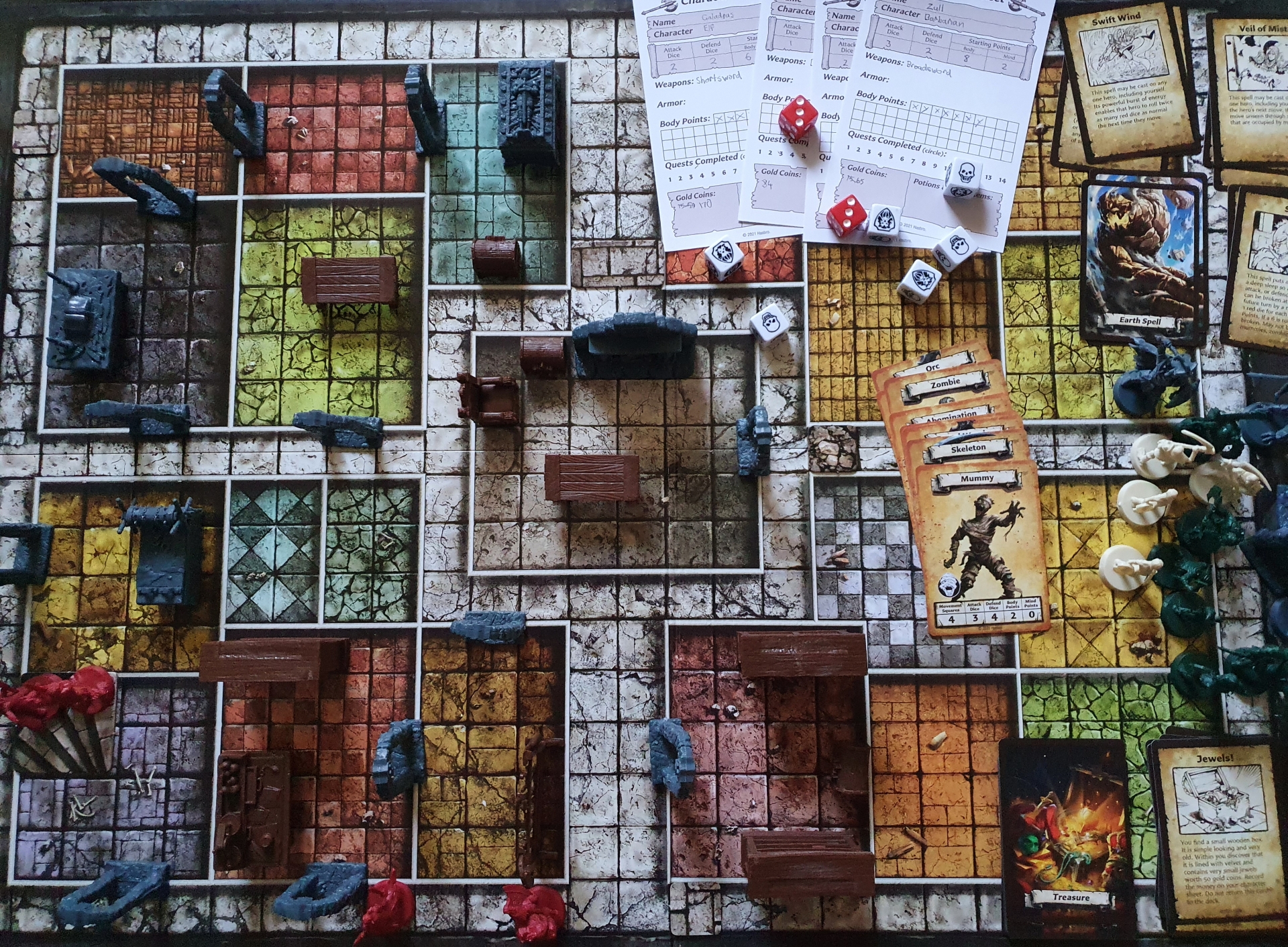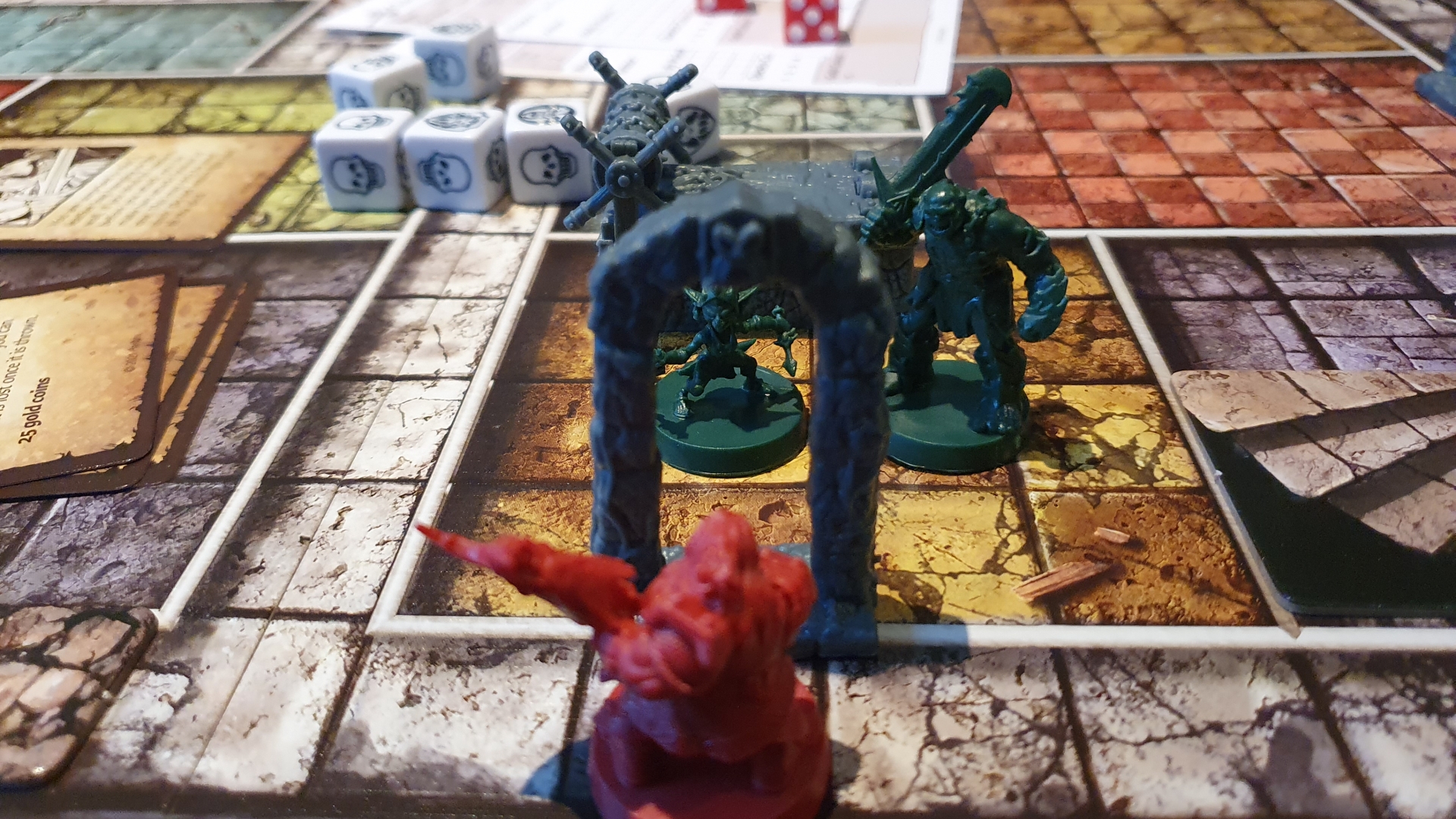I have mixed feelings about HeroQuest's deluxe revival
The classic board game returns in a fancy crowdfunded package, complete with an app that lets you play solo.
HeroQuest was an introduction to the joy of rolling dice to kill pretend goblins that was made in collaboration between Milton Bradley and Games Workshop over three decades ago. It was formative for a lot of baby nerds like me at the time, which is why I wrote 1,600 words about HeroQuest's appeal earlier this year. We're a grown-up target market these days, so Hasbro secured the lapsed rights and brought HeroQuest back via HasLab, a crowdfunding platform that's like Kickstarter for expensive toys based on Hasbro licences. The HeroQuest campaign had a million-dollar target. It went over triple that, ending with $3,721,949 in pledges.
The HeroQuest I got for Christmas 30 years ago was sold in supermarkets alongside Scrabble, and cost much less than it goes for on eBay these days. (Supposedly the reason Milton Bradley stopped printing it and cancelled the final expansions was the high overhead of plastic minis—it sold well, but so did products that were cheaper to make.) The new version, while the same game underneath, is more in-line with the presentation of deluxe hobby store exclusives aimed at adults, with a bigger box and upscaled miniatures that make the old ones look a bit dinky.
More detailed minis are nice, though trickier to paint. The originals, while simplistic, were perfect for making a hash of with your clumsy kid fingers—small areas of ornamentation surrounded by untextured expanses you could hit with one or two colors. I think about the effort it'll take to paint the new minis and know there's no way I'll bother. Even the furniture is fancier, full plastic replacing the cardboard inserts for the fireplace, doors, etc, as well as a tomb that opens. The pegholes for inserting the rats and skulls are gone, but you still get plastic rats and skulls to stick on if you want.
Games Workshop wasn't involved this time, so proprietary elements have been replaced. The one-eyed fimir are now fishpeople called abominations, Chaos warriors are Dread warriors, and so on. The art style has changed as well, gone cartoony, which looks to me more like Warcraft's breakfast-cereal mascot version of Warhammer.
The rules are the same as in the 1990 US edition. I was expecting tweaks and modernizations, even if presented as optional rules—set movement points for players rather than rolling dice, for instance. Instead, though it's no longer the kind of game you'll find shelved next to Monopoly in a supermarket toy aisle, HeroQuest remains aimed at an audience coming from games like it, games that are about having an excuse to roll dice and chat rather than thinky, tactical things.
Players who grew up with the UK rules may be surprised by the American differences. (If you're not sure which version you had, the evil wizard was called Zargon in the US, Morcar if you had the UK rules like we did in Australia.) Changes include enemies routinely having multiple body points, maps having more monsters and traps, the evil wizard getting a deck of spells, and the equipment being slightly different. These differences add up, and it becomes less of a competitive game where players work at cross-purposes to get the best treasure and more of a desperate co-op experience where splitting the party means doom. This became obvious when I played a solo game using the companion app.
My regular gaming group recently played Forgotten Waters, a board game where everyone's a crewmate on a pirate ship. Its companion app narrated our adventures via one player's phone, reading out story and asking us to make choices as we fought krakens and sailed through storms. It was a blast. But while the new version of Heroquest also has an app, unlike Forgotten Waters, or the XCOM board game, or several other board games that make you visit the app store during setup, it's not essential. I didn't even realize it existed until after I'd opened the box and cooed at each little piece of dungeon furniture.
Keep up to date with the most important stories and the best deals, as picked by the PC Gamer team.
The app sits in for the evil wizard, meaning nobody in the group has to play the bad guy. You tell it where the players move and it tells you where to put objects and monsters. If you cast spells on monsters it determines the outcome (it's also pretty strict about line-of-sight). It tells you where to move monsters on Zargon's turn and rolls dice for their attacks, though you have to roll the hero's dice on the board—it's not a replacement for everything.
I played HeroQuest by myself for hours when I was a kid, but it's a lot easier with an app keeping track of things. I thought I'd encountered a bug because a skeleton didn't attack, then remembered I cast a tempest spell on it the previous turn. The app also made me realize I've been carrying around an incorrect understanding of the movement rules for 30 years. Turns out, you can walk right through furniture. I went back to the original rulebook and there's not a single word about having to go around objects. [Update: There's a toggle for this in the settings, labeled "Intangible furniture".]
When the app had an orc hop on a table to attack, that was a legit interpretation of the rules. Another increase to the difficulty, not being able to funnel enemies except at doorways made protecting the wizard harder. After initially splitting the party in half, I reunited them for safety, having the elf cast a spell to run through walls so she could save the dwarf from some undead (the elf's a lady now by the way, as are half the orcs and goblins).
On the way to the exit I rashly decided to open a door I'd skipped and unleashed a pair of Dread Warriors, who have three body points each and take some work to put down. Out of spells, I fought a running battle through a narrow passage to the exit, dropping the last of them with a single body point left on all four heroes. I hate to say it, but the fact I had to roll dice to see how far I'd move each turn like it was The Game of Life or something made that finale pretty tense.
Even so, compared to more recent dungeon crawl board games, it felt breezy. Games like Gloomhaven and Descent have so much setup time and assumed multi-session commitment you're 90% of the way to just running D&D. HeroQuest may be aimed at kids—it says age 14+ on the box, but that seems conservative and I'd go with the original's estimation of nine-to-adult—but that means it's quicker to play and can be enjoyed both by children and adults who've been drinking.
I may balk at an affordable family game being transformed into a deluxe nostalgia experience for middle-class Gen X parents, but having a three-beer alternative to Gloomhaven is definitely appealing.

Jody's first computer was a Commodore 64, so he remembers having to use a code wheel to play Pool of Radiance. A former music journalist who interviewed everyone from Giorgio Moroder to Trent Reznor, Jody also co-hosted Australia's first radio show about videogames, Zed Games. He's written for Rock Paper Shotgun, The Big Issue, GamesRadar, Zam, Glixel, Five Out of Ten Magazine, and Playboy.com, whose cheques with the bunny logo made for fun conversations at the bank. Jody's first article for PC Gamer was about the audio of Alien Isolation, published in 2015, and since then he's written about why Silent Hill belongs on PC, why Recettear: An Item Shop's Tale is the best fantasy shopkeeper tycoon game, and how weird Lost Ark can get. Jody edited PC Gamer Indie from 2017 to 2018, and he eventually lived up to his promise to play every Warhammer videogame.





